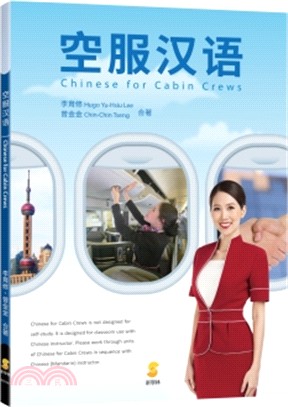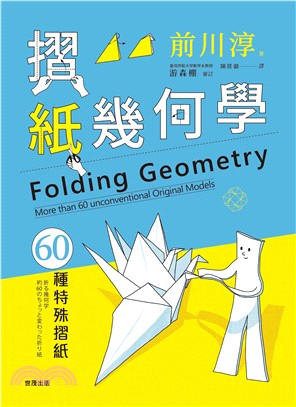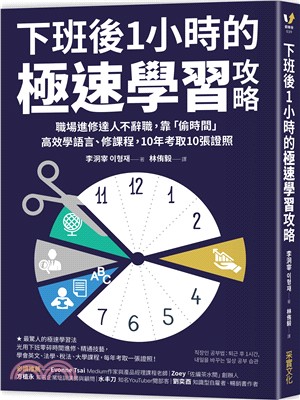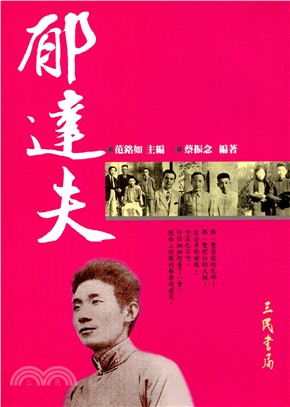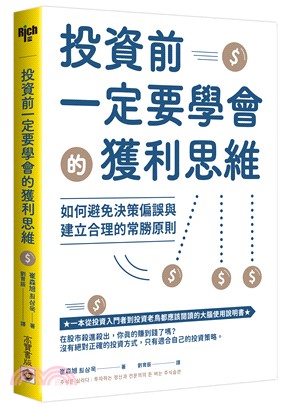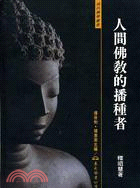商品簡介
This textbook is based on Dr. Hugo Yu-Hsiu Lee’s lesson handouts developed from his and the oldest undergraduate Chinese-language program for the leading Airline Business Department of Thailand (International Air Travel Association’s Authorized Training Center) at Suan Sunandha Rajabhat University (Bangkok). The program in consideration is increasingly recognized as second-to-none for the total number (200+) of alumni who have made successful careers in major airline companies in the ASEAN region and the gulf states (including but not limited to Thai Airways, Thai Smile, AirAsia, Nok Air, Thai Lion Air, Bangkok Airways, Viet Jet, China Airlines, EVA Air and Emirates, UAE).
作者簡介
李育修(Dr. Hugo Yu-Hsiu Lee)
Dr. Hugo Yu-Hsiu Lee (PhD, Language Education, Indiana University-Bloomington, USA) is an award-winning researcher and full-time faculty at National Institute of Development Administration (Thailand). He is the United Nations Consultant (United Nations Learning Team Member) of the United Nations Headquarters, Asia region (United Nations, Economic and Social Commission for Asia and the Pacific, Bangkok).
美國印第安那大學語教博士,曾獲美國印大哈世迪傑出研究員獎得主,以及美國印大史特蘭紀念學者榮譽獎。現任泰國國家發展院(泰國的社科院)全職副教授,以及聯合國亞洲總部的聯合國官員中文班顧問/導師。
曾金金(Chin-Chin Tseng)
Chin-Chin Tseng is a professor of the Department of Chinese as a Second Language at National Taiwan Normal University. She received her Ph.D in Linguistics at University of Hawaii. She is a linguist, phonetician and teacher educator. Her training is in phonetics, interlanguage and L2 Chinese language teaching and learning.
Principal Investigator of An Analysis of Accuracy and Fluency of Modular Speaking Training in Chinese for Cabin Crews sponsored by Research Cooperation for “Strengthening cooperation with ASEAN and South Asian countries in the exchange of academic fields, education and humanities.”
服務單位:國立台灣師範大學‧華語文教學系暨研究所
學歷:美國夏威夷大學語言學博士
計畫主持人:「強化與東協及南亞國家合作交流學術型領域聯盟(教育及人文領域)」
計畫名稱:空服華語的準確度與流利度訓練模組分析
序
本書第一作者Hugo Yu-Hsiu Lee(李育修)
Issues in general purpose language textbooks that give rise to this textbook
Critics contend that there is empirical evidence that language for general purpose (LGP) instruction is unlikely to meet the needs of today’s foreign or second language learners who have a set of specialized and immediate target language needs for professional communication (Andriani, 2014; Trace, Hudson, & Brown, 2015). I argue in this textbook’s forward that over the past ten years or so teaching and learning Chinese as a foreign or a second language (which refers to the branch of foreign or second language education in which teaching methods are traditionally derived from the general purpose of Chinese language teaching and learning) has been criticized on a number of grounds: general purpose Chinese language teaching has lost touch with learners focusing on the needs of communicative Chinese language ability in a particular subject area or in a professional workplace (own fieldwork, 2009-2018), for instance, Chinese for real-estate agents, Chinese for ground attendants and Chinese for cabin crews. I should also note that the teaching of general knowledge of the Chinese language fail to meet the needs of those learning the Chinese language for occupational purposes (own fieldwork, 2009-2018). Language for specific purposes (henceforth LSP), thus, has emerged from the varying needs and goals of foreign or second language learners (Trace, Hudson, & Brown, 2015).
The problems encountered in LSP are multiple, all of which stem from the question of how the in-class language learning tasks can be transferred to real-world workplace communication. First, the problem one encounters when designing a LSP course is that common communication skills necessary across all industries and professions to meet the needs of all foreign or second language learners may not exist. This results in that foreign or second language teachers conduct needs analysis of respective students and classes, and design tailor made LSP courses, facilitating students to speak and converse efficiently and practically in the in-class language-use tasks as “prescribed by their field of study or work situation” (Bojović, 2006). This gives rise to task-based language teaching (henceforth TBLT).
Second, a related problem is the degree to which foreign or second language teachers are capable of acquiring discipline-specific and extra-linguistic knowledge to teach the respective LGP and TBLT courses, in addition to the linguistic knowledge with respect to the target language. Although LGP and TBLT may have a great deal in common with foreign or second language courses for general purposes (both are essential to take into account, for instance, linguistic development, teaching methodology, classroom management, assessment and evaluation for their students), the former faces more challenges as they need to understand the requirements of professional communication in a specific field rather than the teaching activity itself (Bojović, 2006). Despite the development of LSP and TBLT courses since the 1980s, the curriculum drafting, lesson planning, teaching material development, course design and implementation of language learning tasks that offer learners with real-world opportunities to practice language tasks needed for professional communication and industry-oriented talks remain a challenge for LSP and TBLT teachers (Calvert & Sheen, 2015).
Third, in the contemporary applied linguistics literature and classroom teaching, LSP and TBLT courses are most often associated with English for Specific Purposes (henceforth ESP) instruction (Anthony, 1998; Ahmed, 2014; Trace, Hudson, & Brown, 2015). ESP has grown into a movement (e.g., UK, Japan and elsewhere) since the inception of the early 1960’s (Anthony, 1998). Although Chinese is gaining prominence in foreign or second language teaching and learning, there is scarcity of textbook for Chinese LSP and TBLT courses.
The purpose of the textbook
The aim of this textbook is to propose some ways of curriculum drafting, lesson planning, teaching material development, course design and implementation of language learning tasks (focusing on task selection and sequencing) for a LSP and TBLT course, known as Airline Chinese / Chinese for Cabin Crews (or Chinese for the Cabin Crew).
Background and context for the textbook
China has poised itself to become the world’s largest market for both tourist travel and business travel. According to the CIW Team’s post in the China Internet Watch, it has been three consecutive years (2012-2015) for China to supply “the largest outbound tourism market in the world” and the estimated growth of the number of Chinese outbound tourists is increasing (2013: 98 million vs. 2014: 109 million). It is also of importance to note by The Economist (The dragon takes flight, 2016) that since the first quarter of 2016 China has overtaken the US to become the world’s largest market for business travel. As reported by Global Business Travel Association (GBTA) (as cited in the dragon takes flight, 2016), it is estimated that Chinese business travelers spent $291.2 billion in 2015 contrasted with $290.2 billion by American counterparts from the US. In response to China’s fast growth of outbound tourists and business air travelers, the air travel industry, particularly the airline companies, has recruited Chinese-speaking ground / flight attendants to provide services on-the-ground (airport’s service desk) and on-board (cabin) for the rising number of Chinese air travelers. In fact the airline industry in the Southeast Asia expects the number of Chinese-speaking flight attendants to increase over the next decades, as many airline companies (Bangkok-based and Manilabased airlines) highlighted Chinese speaking flight attendant candidates wanted in their recruitment advertisements.
Literature that inform the design of the textbook
The design of the Airline Chinese / Chinese for Cabin Crews textbook is informed and framed by LSP, TBLT and ESP, due largely to that, as stated earlier, general purpose language course fails to meet the needs of foreign or second language learners for fieldspecific communication. In recent years, there has been a growing prominence and considerable interest of LSP and TBLT courses by foreign or second language teachers, educators and researchers (Benson, 2015; Calvert & Sheen, 2015). Some common courses of LSP and TBLT concentrating on the specifics (of terms, vocabularies, phrases and conversations) of certain industries and professions may include Academic English Writing for EFL/ESL or International Students (British Council, 1978), Business English, Business Chinese (offered, for example, at the Assumption University), English for Airtraffic Controllers, English for Technical Writing for Civil Engineers (offered, for instance, at the Asian Institute of Technology), English for Medical Purpose (An example cited by Andriani, 2014), English for Occupational Purpose (An example cited by Andriani, 2014) and Spanish for Tourism. There are some “key distinguishing characteristics” between LSP courses and general foreign or second language courses (Bojović, 2006). Take the ESP for example, Carver (1983) listed three main characters shared across ESP courses (as cited Bojović, 2006): 1) authentic materials, 2) purpose-related orientation, and 3) selfdirection. The design of this textbook is thus informed by above-mentioned literature.
References
1. Ahmed, M. K. (2014). Issues in ESP (English for specific purposes). ‘ELT Voices – India’International Journal for Teachers of English, Vol. 4 (No. 1). Retrieved from http://eltvoices.in/category/volume-4/volume-4-issue-1/
2. Andriani, G. (2014). Problems in teaching English for specific purposes in higher education. Nobel Journal of Literature, Language, and Language Teaching, Vol. 5 (No. 1), pp. 30-40.
3. Anthony, L. (1998). Defining English for specific purposes and the role of the ESP practitioner. Center for Language Research 1997 Annual Review, pp. 115-120.
4. Benson, S. D. (2016). Task-based language teaching: An empirical study of task transfer. Language Teaching Research, Vol. 20 (No. 3), pp. 341–365.
5. Bojovic, M. (2006). Teaching foreign language for specific purposes: Teacher development. 31st Annual ATEE Conference, At Portoroz, Slovenia.
6. Calvert, M., & Sheen, Y. (2015). Task-based language learning and teaching: An action research study. Language Teaching Research, Vol. 19 (No. 2), pp. 226–244.
7. Carver, D. (1983). Some propositions about ESP. The ESP Journal, Vol. 2, pp. 131-137.
8. CIW Team (n.d.). China, the largest outbound tourism market in 3 consecutive years. China
9. Internet Watch. Retrieved from https://www.chinainternetwatch.com/13152/thelargestoutbound-tourism-market-3-consecutive-years/
10. The dragon takes flight (2016, May). The Economist, Retrieved from http://www.economist.com/blogs/gulliver/2016/05/dragon-takes-flight
11. Trace, J., Hudson, T., & Brown, J. D. (2015). An overview of language for specific purposes. In J. Trace, T. Hudson, & J. D. Brown, Developing Courses in Languages for Specific Purposes (pp. 1–23) Honolulu: University of Hawai‘i.
本書第二作者Chin-Chin Tseng(曾金金)
國立臺灣師範大學華語文教學系暨研究所
職稱:教授
此次很榮幸與李育修老師合作出版空服漢語教材,李老師是第一線訓練空服人員漢語的教師;在課堂教學中,除了教授空服漢語的語詞和常用句型,更需著重空服人員的聲、韻、調準確度訓練。但是在訓練漢語為二語的空服人員時,除了掌握語詞的發音與聲調以外,進入語流的口語表達正確度與流利度是非常關鍵的訓練。由於本人長期在漢語文教學進行有關聲學語音分析之研究,將結合線上正音的技術,讓漢語為二語的空服人員能夠利用線上即時回饋學習平臺,進行自我檢測,並自主性地改正發音及調整音高、音長與音強的控制。藉由此次出版的空服漢語教材,對漢語為二語的航空系學生以及預備進入航空業和在職的空服人員,進行空服漢語正確度與流利度的訓練。
首批適用物件,設定為泰語母語者的准空服人員,結合李老師實體空服漢語教學,指導學生學習空服漢語教材的內容,我的部分則是精進空服人員漢語發音與口語表達。自我檢測系統從發音(包括:聲母、韻母)、音高(包括:字調、語調、句調及輕重音)、音長(包括:音節組成及語句切分、輕重音、停頓)及音強(包括:輕重音),評估空服人員漢語口語表達的正確度與流利度。
此外,為協助空服人員培養良好的漢語發音習慣,有效改善口語表達,未來若有機會,將以空服漢語教材,製作搭配線上口說訓練課程,提供空服人員自主練習、自我改善的訓練機制。
Chin-Chin Tseng
National Taiwan Normal University
Professor, Dept. of Chinese as a Second Language
目次
Foreword by Ammarawadee Sornsuphap I
Foreword by Phattharaphon Silarak III
Preface by Hugo Yu-Hsiu Lee V
Preface by Chin-Chin Tseng XIII
To the Teacher & the Student XV
Guide to use this Textbook XIX
Unit I
Before Boarding:
Ground Service
Lesson 1 Ground Service 3
Lesson 2 Check-In Service 13
Lesson 3 Airport Facilities 31
Lesson 4 Flight Status 39
Lesson 5 Boarding Service 49
Unit II
After Boarding:
On-board Service
Lesson 6 Safety Instruction to Passengers 59
Lesson 7 Serving Drinks to Passengers 67
Lesson 8 Serving Meals to Passengers 75
Lesson 9 Entertainment Media and Facilities 83
Lesson 10 Inflight Shopping & Landing Service 89
Unit III
After Landing:
Ground Service
Lesson 11 Ground Service After Landing 103
Appendices Word & Phrase Bank: Small Flashcards 111
Index 128
主題書展
更多主題書展
更多書展本週66折
您曾經瀏覽過的商品
購物須知
為了保護您的權益,「三民網路書店」提供會員七日商品鑑賞期(收到商品為起始日)。
若要辦理退貨,請在商品鑑賞期內寄回,且商品必須是全新狀態與完整包裝(商品、附件、發票、隨貨贈品等)否則恕不接受退貨。




